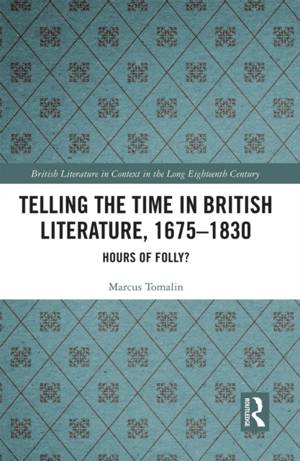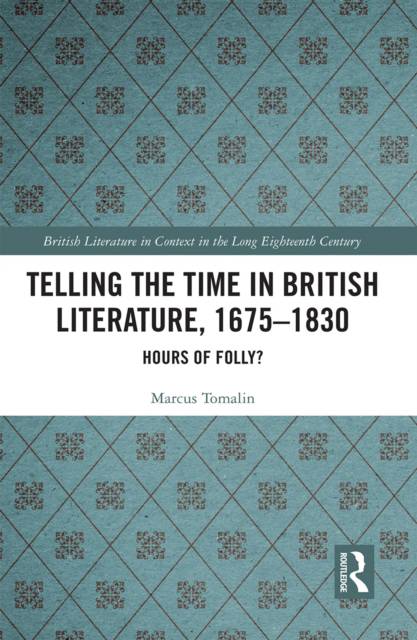
- Retrait gratuit dans votre magasin Club
- 7.000.000 titres dans notre catalogue
- Payer en toute sécurité
- Toujours un magasin près de chez vous
- Retrait gratuit dans votre magasin Club
- 7.000.000 titres dans notre catalogue
- Payer en toute sécurité
- Toujours un magasin près de chez vous
Description
Although the broad topic of time and literature in the long eighteenth century has received focused attention from successive generations of literary critics, this book adopts a radically new approach to the subject. Taking inspiration from recent revisionist accounts of the horological practices of the age, as well as current trends in ecocriticism, historical prosody, sensory history, social history, and new materialism, it offers a pioneering investigation of themes that have never previously received sustained critical scrutiny. Specifically, it explores how the essayists, poets, playwrights, and novelists of the period meditated deeply upon the physical form, social functions, and philosophical implications of particular time-telling objects. Consequently, each chapter considers a different device - mechanical watches, pendulums, sandglasses, sundials, flowers, and bells - and the literary responses of significant figures such as Alexander Pope, Anne Steele, William Wordsworth, Samuel Taylor Coleridge, Charlotte Smith, and William Hazlitt are carefully examined.
Spécifications
Parties prenantes
- Auteur(s) :
- Editeur:
Contenu
- Nombre de pages :
- 218
- Langue:
- Anglais
- Collection :
Caractéristiques
- EAN:
- 9781032237404
- Date de parution :
- 13-12-21
- Format:
- Livre broché
- Format numérique:
- Trade paperback (VS)
- Dimensions :
- 152 mm x 229 mm
- Poids :
- 299 g







